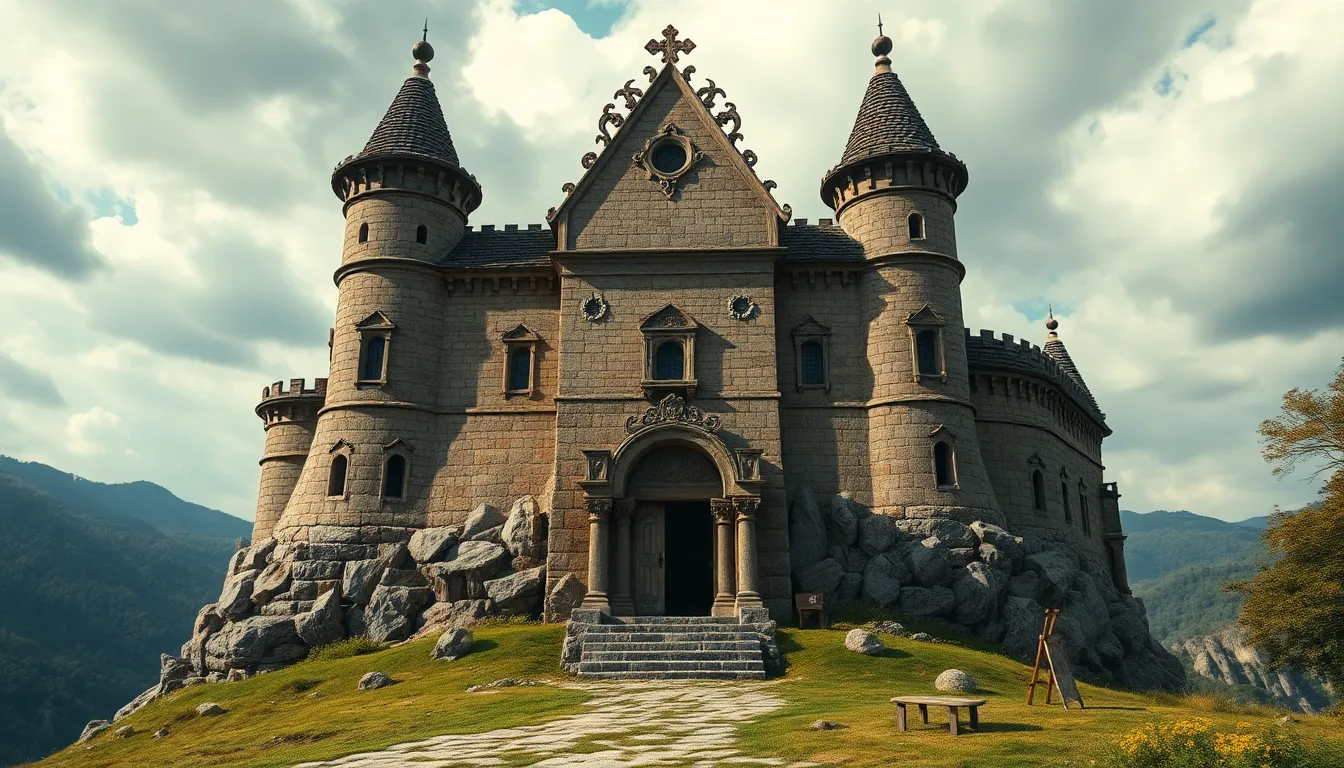The Kingdom of the Timeless Legends: Myths of Enduring Stories
1. Introduction to the Kingdom of Timeless Legends
Timeless legends are narratives that transcend generations, embodying the values, beliefs, and experiences of the cultures they originate from. These stories often serve as moral compasses, guiding individuals in their personal and societal lives. The significance of timeless legends lies in their ability to connect us with our ancestors, offering insights into human nature and the universe.
This article aims to explore the fascinating world of timeless myths, examining their origins, themes, cultural variations, and ongoing relevance in modern society. By delving into these enduring stories, we can uncover the threads that connect humanity across time and space.
2. The Origins of Timeless Myths
The creation of myths can be traced back to the dawn of human civilization. Historical contexts reveal that early humans used storytelling as a means to explain natural phenomena, cultural practices, and existential questions. Myths often served to define the world around them, providing a framework for understanding life’s mysteries.
Oral tradition played a crucial role in preserving these legends. Before the advent of written language, stories were passed down through generations via spoken word. This tradition of storytelling allowed communities to maintain their cultural identity and transmit knowledge, values, and beliefs. The oral nature of myths also meant they were dynamic, evolving with each retelling to reflect the changing values of society.
3. Archetypes and Themes in Enduring Stories
Myths are rich with archetypes and themes that resonate universally. Common archetypes found in myths include:
- Heroes: Figures who embark on quests and face great challenges.
- Tricksters: Characters who use wit and cunning to outsmart others.
- Wise Old Men/Women: Mentors who provide guidance and wisdom.
Recurring themes in these myths often revolve around:
- Creation: Stories that explain the origins of the world and humanity.
- Morality: Lessons about right and wrong, often illustrated through the consequences of characters’ actions.
- The Hero’s Journey: A narrative arc that follows a hero’s adventure, growth, and transformation.
4. Cultural Variations: Myths Around the World
Myths vary widely across cultures, yet they often share striking similarities. For instance:
- Greek Myths: Rich in characters like Zeus and Hercules, these stories explore themes of fate, hubris, and the divine.
- Norse Myths: Featuring gods such as Odin and Thor, these tales delve into concepts of bravery, sacrifice, and the end of the world.
- African Myths: Often centered around nature and ancestral spirits, these stories highlight community and harmony with the earth.
- Asian Myths: Diverse and complex, these myths frequently incorporate elements of Buddhism and Hinduism, exploring the cycles of life and reincarnation.
The comparative analysis of these myths reveals both similarities in storytelling structures and unique cultural elements that reflect the societies from which they emerge.
5. The Role of Nature and the Supernatural in Myths
Nature often plays a symbolic role in myths, representing both beauty and danger. Common natural elements include:
- Mountains: Symbolizing challenges and spiritual ascension.
- Rivers: Representing the flow of life and the passage of time.
- Celestial Bodies: Stars and moons often serve as guides or signs from the gods.
Supernatural beings, such as gods, spirits, and mythical creatures, are central to many myths. They often interact with humans, influencing their destinies and teaching lessons about morality and existence.
6. The Influence of Timeless Legends on Literature and Art
Timeless legends have significantly influenced literature and art throughout history. Notable examples include:
- The Iliad and The Odyssey: Homer’s epic poems are steeped in Greek mythology.
- Shakespeare: Many of his plays, such as “A Midsummer Night’s Dream,” draw on mythological themes and characters.
- Visual Arts: Artists like Botticelli and Michelangelo depicted mythological scenes, bringing ancient stories to life on canvas.
These works exemplify how timeless legends continue to inspire creativity and artistic expression across different mediums.
7. The Evolution of Myths in Modern Society
Contemporary society often reinterprets ancient myths, adapting them to reflect modern values and issues. This evolution can be seen in:
- Film and Television: Modern adaptations of myths, such as “Clash of the Titans” and “Thor,” bring ancient stories to new audiences.
- Literature: Authors like Neil Gaiman and Madeline Miller reimagine myths, exploring themes of identity and power.
- Digital Narratives: The rise of the internet has led to the creation of new legends, such as urban myths and online folklore.
These adaptations demonstrate the resilience of myths and their ability to evolve while retaining core themes and messages.
8. The Psychological Impact of Myths on Human Behavior
Carl Jung’s theory of archetypes and the collective unconscious highlights the psychological significance of myths. He posited that these stories tap into shared symbols and themes that resonate deeply within the human psyche. Myths shape personal and societal values by:
- Providing Role Models: Heroes in myths serve as aspirational figures, embodying qualities we strive to emulate.
- Offering Moral Guidance: Myths often convey ethical lessons, helping individuals discern right from wrong.
- Creating a Sense of Belonging: Shared myths foster community and cultural identity.
9. Preserving the Legacy of Timeless Legends
Efforts to document and revitalize endangered myths and storytelling traditions are crucial in preserving cultural heritage. Initiatives include:
- Oral History Projects: Recording the stories of elders to ensure they are not lost.
- Educational Programs: Teaching myths in schools to instill appreciation for cultural narratives.
- Digital Archives: Creating online repositories for myths and legends to reach wider audiences.
These efforts highlight the importance of education and cultural preservation in maintaining the legacy of timeless legends.
10. Conclusion: The Enduring Power of Mythology
Timeless legends remain relevant in today’s world, offering profound insights into the human experience. They connect us with our past, enrich our present, and shape our future. As we continue to explore and reinterpret these myths, we reaffirm their power to inspire, educate, and unite us across the ages.



